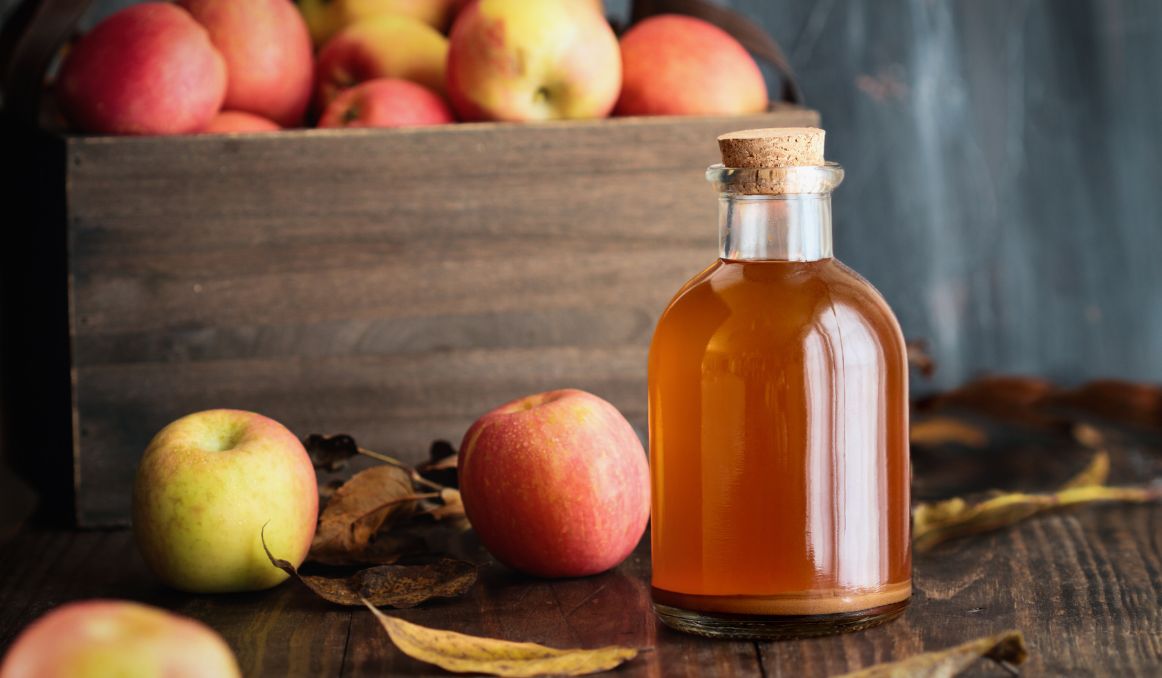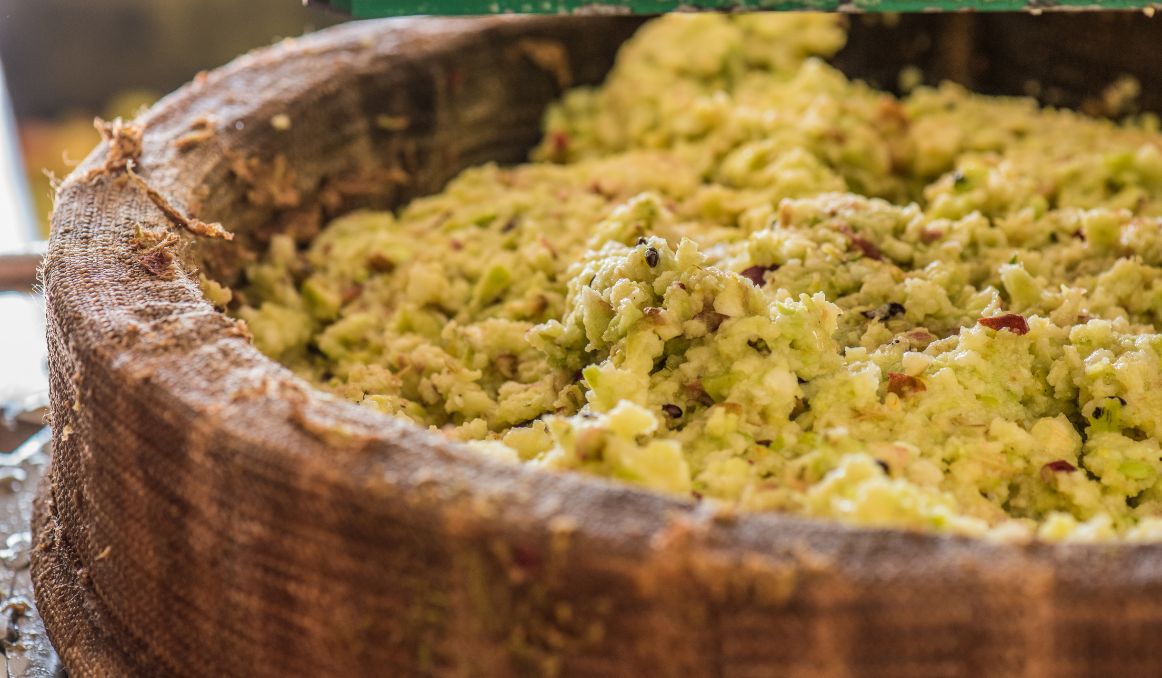Does Hard Cider Have Brewer’s Yeast?
Asking does hard cider have brewer’s yeast is like asking if water is wet.
Yes!
Hard cider absolutely has brewer’s yeast.
Let’s look at why.

Yeast: What It Is. What It Does.
So, first and foremost, it is imperative to understand that no alcohol could ever be produced without yeast.
The primary yeasts used to make alcohol come from two parent strains, Saccharomyces cerevisiae, which makes ales, and Saccharomyces pastorianus, which makes lagers.
There is also a little known strain called Brettanomyces, which, when blended with one of the yeast strains above, produces a sour beer.
But in terms of “brewer’s yeast,” that term could refer to any of the above.
It usually refers to Saccharomyces cerevisiae, though.
But here’s the thing, S. cerevisiae is also the yeast that makes bread and wine.
So “brewer’s yeast” yeast is kind of a misnomer.
When it comes to fermenting, yeast is yeast is yeast is yeast.
Now, there are better substrains for bread, wine, and beer, just as there are better substrains for different types of beer, different flavors and textures, etc.
In general, brewers won’t use “baker’s yeast” as the substrain typically used has a much lower alcohol tolerance, so you would end up with a very low ABV as your yeast would die off or lie dormant after a certain level is reached, usually around 4%.
Likewise, vintners will aim for a higher alcohol tolerating yeast substrain than even a brewer’s yeast substrain as wine tends to have an ABV well above 11%, whereas beer tends to be lower on that scale, closer to 5% or 6%.
But all of this has to do with experimentation and only really gets confusing because we have entered a day and age of purchasing manufactured yeast.
Before industrialization took hold in the 1800s, bakers, brewers, and vintners never had to bother with figuring out which yeast was best for their product because nature took care of fermentation for them.
The baker would roast, grind, and make dough with a cereal grain.
The brewer would roast, grind, and boil and steep a cereal grain in water.
And the vintner would crush grapes into a juice.
Each artist would then allow nature to take its course.
Whichever yeast was naturally attracted to the dough, the wort, or the must, would then settle in and get to fermenting.
All sugars would be converted to alcohol and carbon dioxide, along with hundreds of other secondary metabolites and micronutrients, and you would have a lovely end product.
It was only once companies started patenting and controlling the flow of yeast that these artists had to watch out for which “type” of yeast to buy for their own fermentation.
Hard Cider and Yeast
This same rule holds true for cider, which has been around at least as long as wine and certainly much longer than beer, though many people think of it as more of a beer.
Think about it, though.
Wine is crushed fruit that has been fermented.
Cider is also crushed fruit that has been fermented.
Beer is a grain product that requires the roasting, grinding, and boiling of the grain before yeast will have anything to do with it.
You could follow the same steps for cider that you would for wine and end up with an excellent product.
Crush your fruit or juice it in a juicer, and then leave the juice to sit in a lightly covered container to prevent any solid sediment from getting in.
In a couple of weeks, you would have a delicious cider to share with friends and family.
The big concerns of contamination are 99 times out of 100 solved by the alcohol and good bacteria that will get into your juice.
Alcohol kills 99.0% of harmful contaminants, and good bacteria kills off bad bacteria.
In fact, it is usually the human interference with things like hyper sanitation and extra filtration that lead to contamination issues.
Humans have been making beers, wines, and ciders for millennia with no ill effects.
Brewer’s Yeast and Cider

But yes, if you want to order a yeast that is specific to a beer strain, you can absolutely use it to make hard cider.
For all intents and purposes, and if you want to sell your cider to a larger crowd as a brewer, do make sure all of your equipment is highly sanitized, and you can either crush your fruit or run it through a juicer.
Usually, brewers will use apples or pears, but you can also add oranges, cloves, and even cinnamon to make your cider more festive, and then add your brewer’s yeast.
Brewer’s yeast, again, has a lower alcohol threshold than yeast typically used for wine, so be mindful that your cider will be “hard” but it will not be as hard as it could be had you used a wine yeast.
If you use a wine yeast, you can expect more of a fruit wine, with a higher ABV that will actually make your hard cider “hard.”
Make Hard Cider
Clean and sanitize all of your brewing equipment:
- Cider press
- Apple scratter
- 5 gallon bucket
- Conical fermenter
- Airlock
- Metal blowoff tube
- Hydrometer
- Auto Siphon
- Bottles with caps
You will need 5 gallons of fresh pressed apple cider, or pear cider, and 1 packet of yeast.
Take your specific gravity measure before pitching your yeast.
Then pitch your yeast into your fermenter and seal the container with an airlock so you can release pressure and keep the bad stuff out.
Fermentation will begin within 24 hours and can last up to two weeks. You will notice peak fermentation dies off when the frothing and bubbling dies down.
Now, you want to rack your cider, allowing for secondary fermentation to smooth out all off flavors.
You can do this by simply siphoning the cider to another vessel, cleaning out the fermenter, and the transferring back again.
Wait another week or so and you can expect a perfect cider.
Take another gravity reading so you can calculate your ABV.
The key to great cider, as with anything, is to have fun experimenting, and in this case, a lot of your experimenting will be with which yeast gives you the best product.
Cheers!
If you’re interested in finding out how you can use our technology to control fermentation and monitor your yeast, save work hours and improve the cost-efficiency of your business, drop us a line at [email protected] or check out the product pages (for beer or wine – works for cider as well):
- Oculyze BB 2.0 (Better Brewing) Yeast Cell Counter App + Hardware
- Oculyze FW (Fermentation Wine) Yeast Cell Counter App + Hardware
Also, you can now get access to a fully functional demo account to test your yeast via our Web App. Completely free of charge and with no commitment to purchase.


